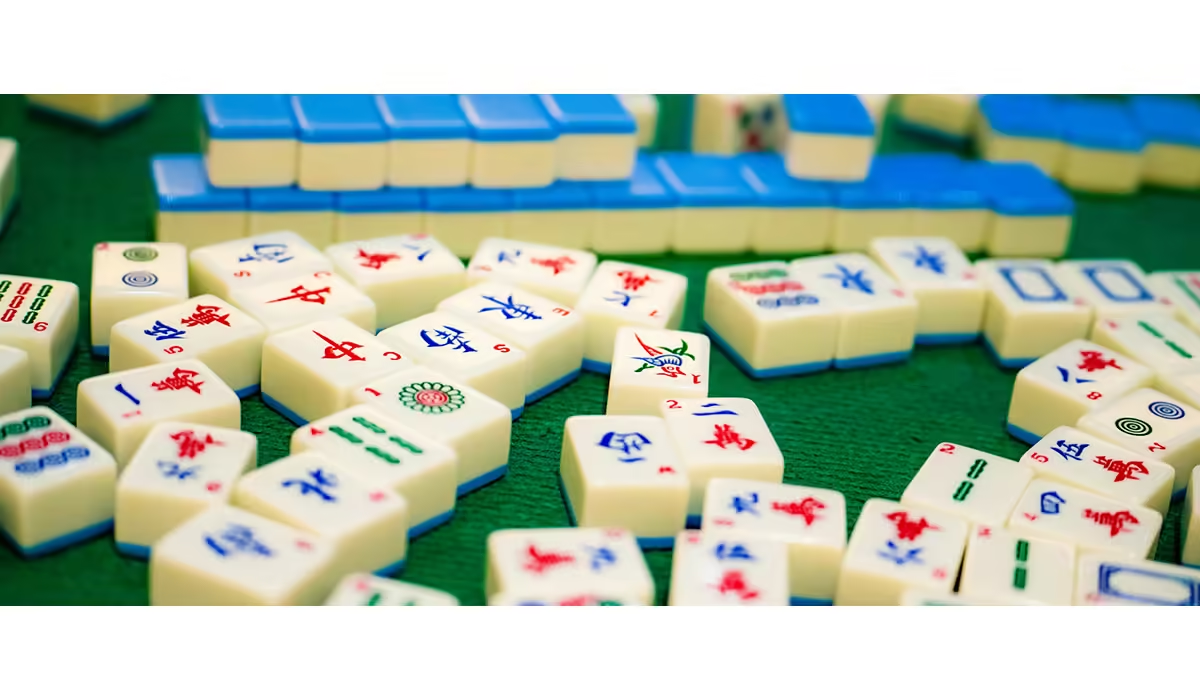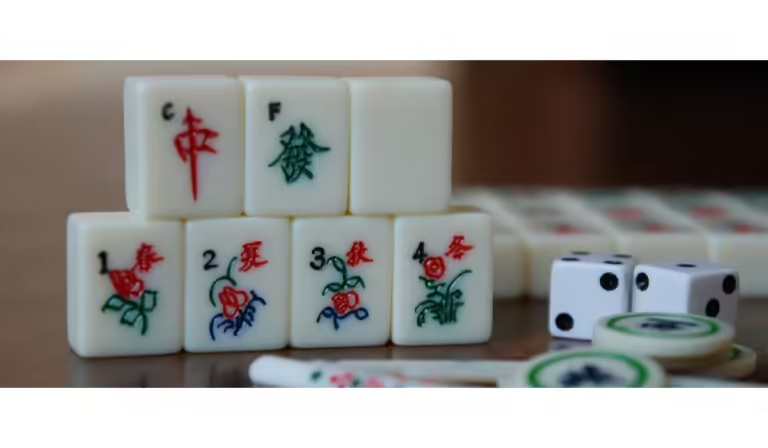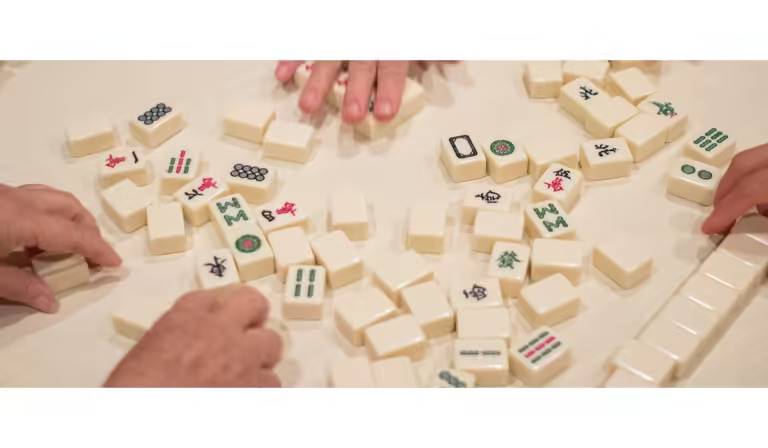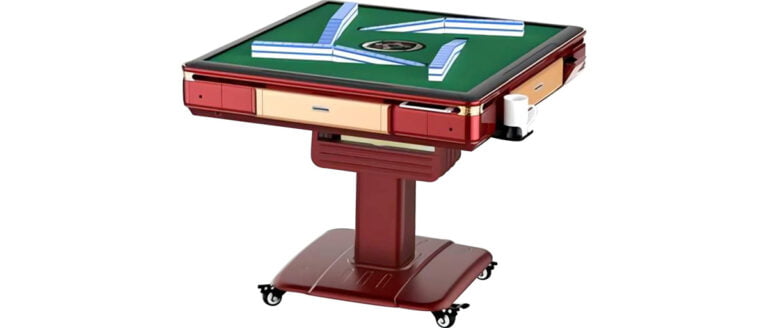Mahjong is an ancient Chinese tile-based game that has gained immense popularity across the globe. It is played with a set of 144 tiles, which are divided into different suits and honor tiles. One of the key elements in Mahjong is understanding the concepts of Pung and Kong. These terms refer to specific combinations of tiles that players can make during the game. In this article, we will explain in detail what a Pung and Kong are and how they are used in Mahjong.
Table of Contents
Understanding Pung
A Pung is a set of three identical tiles from the same suit. In other words, it is a combination of three tiles with the same number or rank. For example, if a player has three Bamboo 5 tiles, they can form a Pung. Pungs can be made using tiles from any of the three suits: Bamboo, Characters, or Dots.
Pungs are an essential part of Mahjong because they allow players to score points and create opportunities for winning hands. When a player forms a Pung, they can declare it by exposing the set of three tiles face-up in front of them. This notifies the other players that they have a Pung and may potentially use it to complete their hand.
Importance of Pungs in Mahjong
Pungs serve multiple purposes in Mahjong. Firstly, they contribute to the overall point value of a player’s hand. Each Pung holds a specific point value, which varies depending on the rules being followed. By forming Pungs, players can increase their score and improve their chances of winning the game.
Secondly, Pungs can be used to create winning hands. In Mahjong, players aim to assemble a complete hand with various combinations of tiles. Pungs are one of the fundamental building blocks of a winning hand. By collecting Pungs, players can work towards completing specific patterns or combinations required for victory.
Lastly, Pungs can also serve as a defensive strategy in Mahjong. By declaring a Pung, players reveal their hand and provide insight into the tiles they are collecting. This information can be used by other players to deduce the potential hand combinations and adjust their own strategies accordingly. Additionally, declaring a Pung can disrupt opponents’ plans by forcing them to discard tiles that were part of their intended combinations.
Understanding Kong
Similar to Pungs, a Kong is also a set of four identical tiles from the same suit. However, Kongs are more powerful and significant than Pungs in Mahjong. There are two types of Kongs: a concealed Kong and an exposed Kong.
Concealed Kong
A concealed Kong, also known as a Hidden Kong, is formed when a player has four identical tiles in their hand without declaring it. To form a concealed Kong, a player must have three identical tiles in their hand and then draw a fourth tile of the same kind. Once a concealed Kong is formed, the player must declare it by placing the set of four tiles face-down in front of them. The concealed Kong is only revealed to the other players when a player discards a tile that completes the concealed Kong, and the player declares it by turning the tiles face-up.
Exposed Kong
An exposed Kong, also known as an Open Kong, is created when a player has a Pung and subsequently draws the fourth tile of the same kind. Unlike a concealed Kong, an exposed Kong is immediately declared by the player. The player takes the Pung of three tiles and adds the fourth tile face-up in front of them to create the Kong.
The Significance of Kongs in Mahjong
Kongs have several important implications in Mahjong. Firstly, they offer higher point values compared to Pungs. In most scoring systems, a Kong is worth more than a Pung. This incentivizes players to actively seek opportunities to form Kongs during the game.
Additionally, Kongs allow players to draw replacement tiles from the dead wall. The dead wall is a reserved section of tiles that is not used in the regular gameplay. When a player forms a Kong, they have the privilege of drawing the next tile from the dead wall, giving them an advantage in terms of acquiring specific tiles they may need to complete their hand.
Kongs can also be used strategically to disrupt other players’ plans. By declaring a Kong, players gain visibility into the other players’ hands and may force them to discard tiles that were part of their intended combinations. This can create opportunities for players to block their opponents’ progress or improve their own hand.
In conclusion, understanding the concepts of Pung and Kong is essential for anyone looking to master the game of Mahjong. Pungs provide scoring opportunities, serve as building blocks for winning hands, and can be used defensively. Kongs, on the other hand, offer higher point values, permit drawing from the dead wall, and can disrupt opponents’ strategies. By harnessing the power of Pungs and Kongs, players can enhance their gameplay and increase their chances of success in Mahjong.
FAQ
1. What are the three main types of sets in Mahjong?
The three main types of sets in Mahjong are Chow, Pung, and Kong.
2. How is a Pung formed in Mahjong?
A Pung is formed by collecting three identical tiles, regardless of their suit or number.
3. What is the significance of declaring a Pung in Mahjong?
Declaring a Pung in Mahjong allows players to score points and provide valuable information to their opponents, potentially influencing their opponents’ tile-drawing decisions.
4. How are Kongs formed in Mahjong?
Kongs are formed by adding an extra tile to a Pung, making it a four-tile set. The additional tile can be obtained by drawing from the wall or by claiming it from another player’s discard.
Affiliate Disclosure
Some of the links on MahjongGames.net are affiliate links. This means that we may earn a small commission if you click through and make a purchase, at no additional cost to you. Please note that our product reviews and roundups are independent, and the affiliate relationships do not influence our content in any way.
MahjongGames.net is a participant in the Amazon Services LLC Associates Program, an affiliate advertising program designed to provide a means for sites to earn advertising fees by advertising and linking to Amazon.com.
Amazon and the Amazon logo are trademarks of Amazon.com, Inc. or its affiliates.
Our passion for games extends far beyond the mah jong table. We’ll be your trusted companion, on a journey through the enchanting realms of not only mahjong but also backgammon, dominoes, chess, checkers, and a diverse array of other captivating board games.
Whether you’re in search of the ideal chess set, a luxury backgammon set, a chinese checkers set, a checkers set, or if you’re seeking the excitement of a thrilling game of mahjong solitaire, we’ll guide you along the way. In partnership with our affiliates, we bring you an extensive selection of board games and past times to explore and enjoy.
Dive into our extensive collection of guides and reviews, and unlock the joy and exhilaration that board games offer. From exquisitely crafted game pieces to the essential accessories that elevate your gaming experience, we’re here to guide you through it all with ease and delight.
Join us in celebrating the timeless allure and camaraderie that these games nurture, one post at a time!





